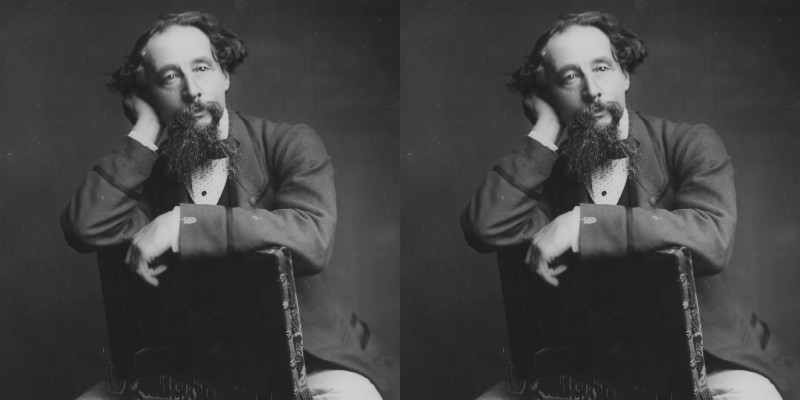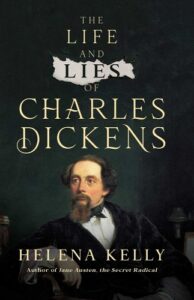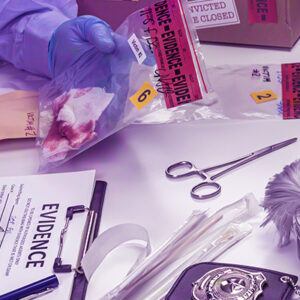The weather has been exceptionally mild of late but in this Christmas season every party demands a good blaze and good cheer. What with the fire and the punch bowl and mounting excitement, they are all already too warm; the children pink-cheeked, the ladies, both young and older, hectically flushed. Mrs Dickens, so near her time that none of the married women think it altogether wise for her to have come, sits breathless and smiling, dabbing at her brow. As for the gentlemen, one or two of them are growing so very boisterous, so shiningly rubicund, that it seems not impossible they might drop dead of an apoplexy and ruin poor Nina’s thirteenth birthday party–and almost certain that not all the glassware will survive the evening intact.
The hostess, Mrs Macready, whose actor husband is away on tour in America, grows fretful. The gentlemen are her husband’s friends, for the most part, and kindly meaning to fill her husband’s place, but how is she to control them? All these sticky-fingered children, her pretty rosewood tables, everyone growing impatient. How long are they to be kept waiting?
But there are promising signs at last–a head peers around the door, conversations fade, noisy masculine voices demand quiet, a wine glass is rung, a bawled cry of Order!and their evening’s entertainment bounds into the room.
Dickens is brilliant, of course. He pulls coins from behind the ears of the birthday girl and magics up sweets. He burns a handkerchief and then draws it out from a wine bottle, unsinged. Will anyone lend him a pocket-watch? In a flash it vanishes, only to be discovered inside a locked tea caddy. He conjures a guinea pig, which gets loose and scurries about the floor, squeaking furiously, fur on end. He kindles a fire in a hat, sets a saucepan over it and–in no more than a minute–has turned raw eggs and flour into a hot plum pudding and shows off the inside of the hat, good as new. Everyone is amazed, astonished. The room rocks with laughter. There is a storm of applause.
Dickens bows, delighted.
His friend John Forster fetches and carries and holds the props. (1)
You may think that you know all there is to know about Charles Dickens–and there have been so many biographies and biopics devoted to him, so many newspaper stories, that you can be forgiven for thinking so. John Forster may not be a name you’re very familiar with, though, but if you’re interested in Dickens you really should be.
The two men seem to have met towards the end of 1836, introduced by a mutual acquaintance, the novelist William Harrison Ainsworth. (2) They hit it off. Invitations and gifts of magazines quickly followed their first meeting. (3) By June 1837, Forster was helping Dickens in a contractual dispute. (4) From then on, for almost the entirety of Dickens’s career, John Forster was there in the background, dealing with the practicalities, prompting and advising. Nowadays we might call him Dickens’s literary agent. It was to Forster that Dickens usually confided new ideas and complained when his writing wasn’t going well; Forster who read his first drafts and negotiated on his behalf with publishers. They socialised and holidayed together. Few other relationships in Dickens’s life proved so enduring. While friends and business associates and even close family members were left rejected by the wayside, Forster remained within the circle of trust. Dickens may have taken up with other intimates, such as fellow novelist Wilkie Collins, but when he separated from his wife Catherine in the late 1850s, it was Forster he chose to negotiate terms for him. And Forster was the person Dickens selected to safeguard his manuscripts after his death. The two men were close in age. Both, after toying with legal careers, turned their energies to literature, though with markedly different success. Forster was chiefly a bread-and-butter writer–a journalist, a critic, occasionally a biographer. In later life he also worked for the Lunacy Commission and acquired–most unexpectedly–a rich wife. He had a remarkable talent for getting close to other, more celebrated literary figures. While still a young man he befriended Charles Lamb (of Tales from Shakespeare fame), the poet Robert Browning, and Edward Bulwer-Lytton, who was a best-selling author in the late 1820s and 1830s. (5) He also became engaged to a then wildly famous poetess called Letitia Elizabeth Landon, known by her initials L.E.L. A decade his senior, with a spotty reputation, she eventually broke off the relationship and married another man. (6) Nor was Dickens the only author he represented.
Unlike modern literary agents, Forster didn’t get a contractually agreed cut of any profits made by his writer friends. What motivated him, then, if it wasn’t money? What hunger made him pursue, for decades, the role of unpaid helper and occasional conjurer’s assistant?
Perhaps what those who befriend celebrities so often want: proximity, access, inside knowledge.
That, anyhow, is what everyone assumed Forster had managed to get. The first volume of his The Life of Charles Dickens appeared in 1871, eighteen months after the novelist’s death, and the third and last volume in 1874. People might have joked at the time that the book ought more properly to have been called ‘The Life of John Forster, with reminiscences of Charles Dickens’, but they read it and believed it. (7) He was, after all, effectively Dickens’s authorised biographer; he was in a position to know things. His biography remains one of the most influential ever to be written. You’ll almost certainly be familiar with parts of what he wrote, even if you don’t know where they originated from. A substantial proportion of what everyone knows about Dickens comes from Forster.
For instance, it was Forster who announced to the world that sections of Dickens’s 1849–50 novel David Copperfield were pretty much straight memoir, revealing that the celebrated author had, like David, been forced into menial work as a child, taken out of school and made to labour in a boot-polish factory when his father was sent to debtors’ prison. Forster is our only source forthis story, as he is for a lot of other supposed facts about Dickens’s life.
These days, though, locating and accessing archival material has become a great deal easier than it used to be. And the archives show that quite a number of Forster’s facts are incorrect, or inaccurate. He gets dates wrong, and sometimes names, too. He makes no reference to events that we now know took place. Details seem to be ignored or invented; there are people missing from the story who really ought to be there.
Is it simply that Forster wasn’t a very good biographer, or was he, instead, continuing to facilitate Dickens in the same way he’d been doing for years? While claiming to reveal the truth about his famous friend, was he actually helping to maintain Dickens’s lies, keeping Dickens’s secrets?
At the end of 1843, when Dickens performed his conjuring tricks at Nina Macready’s birthday party, he was still in his very early thirties. But since he had been hurtled to fame with The Pickwick Papers in 1836, he’d already completed four other novels, among them such runaway successes as Oliver Twist, Nicholas Nickleby and that great early Victorian favourite, The Old Curiosity Shop. A Christmas Carol had just come out. He’d spent six months of the previous year touring the United States and Canada, fêted wherever he went. His name had appeared in the newspapers thousands of times. Even those who hadn’t read any of his writing knew who he was.
But no one knew very much about him.
Take, for example, A New Spirit of the Age. This was a book of biographical essays about eminent early Victorians which was published in 1844. An essay on Dickens opened the book and the picture of him which accompanied it served almost as a frontispiece. The flattering suggestion is that he was the poster boy for the new Victorian age. The essay itself discusses his successes, to date, and his failures. It contains some sophisticated analysis of his writing. There’s one thing missing, though. The other essays in A New Spirit of the Age mention where their subjects were born, who their family were, where they went to school: this one doesn’t do any of that. We’re told that, ‘if ever it were well said of an author that his “life” was in his books, (and a very full life, too,) this might be said of Mr. Dickens’. (8) Actually it’s clear that–after seven years of being a household name–Dickens’s origins and background remained, as far as the public was concerned, almost a total blank.
And despite intense, continued press interest, this state of affairs more or less persisted. Dickens’s stories were clearly often inspired by his early life–in fact, several quite unexpected aspects of his work turn out to be partly autobiographical–but he almost never wrote of his childhood without a protective veneer of fictionality, even when he wasn’t writing fiction.
In the last decade of his life, Dickens produced a number of magazine essays which look like memoirs, and have sometimes been treated so. They aren’t. There’s the ostensibly confiding piece, ‘Dullborough Town’, in which he recalls his ‘boyhood’s home’, offering details of his days there, games and small friends, and strange, dreamlike memories. It’s wholly unreliable. He describes a made-up place, an amalgam of two neighbouring towns, Chatham and Rochester, and gives it the made-up name ‘Dullborough’. Readers are led to understand that he had not revisited the haunts of his boyhood until just ‘the other day’, when in fact he visited frequently through his twenties and thirties, and in his forties had bought a large house only a couple of miles up the road, at Gads Hill. Dickens even brings a dead childhood friend back to life, and describe shaving dinner with her and her family. (9)
Parts of these essays probably are rooted in genuine recollections, but how, in the circumstances, can we trust anything that he says in them? They’re about as truthful as an interview with Hello! magazine or an influencer’s social media feeds, and Dickens was in some ways much more like a celebrity or a big-name influencer than an ordinary author. He was astonishingly, globally famous. He was a product, a brand: available for so many shillings and pence in whatever format the public preferred. Illustrations of his characters were available to purchase. Unscrupulous individuals took advantage of lax copyright laws to publish abridgements and continuations of his work, and stage unauthorised adaptations. More loyal readers could choose to consume his work by monthly or weekly instalment or in book form. They could buy his magazines, Household Words and All the Year Round. There was special Christmas-edition Dickens, which proved very popular. Eventually people could pay to go and hear him perform his stories aloud in dramatic readings. He went on tour. Even his burial ended upturning into a public event.
When it comes to that kind of fame, having a public persona is both good business sense and a psychological shield. It isn’t surprising that Dickens should have worked so hard during his lifetime to control what people knew and thought about him–sending out press releases, briefing against former business associates and family members, concealing information that his public might not react well to.
But the gaps and elisions in Forster’s biography suggest that Dickens also put considerable effort into controlling what people would think of him after his death.
For years we’ve been under the impression that we’d carefully ferreted out most of Dickens’s secrets–his infamous involvement with the young actress Ellen Ternan, his father’s imprisonment for debt, his childhood employment in the boot-polish factory–but that’s not what happened. We didn’t have to find these things out. Dickens told us. He chose to make them public. In his will, Ellen Ternan is the first beneficiary listed. The story about the debt and the boot-polish factory appears in a book written by the man Dickens himself had selected to write it; it’s the story Dickens gave him.
In spite of the revelations it offered, Forster’s The Life of Charles Dickens is less a biography than an exercise in posthumous brand management. Indeed, Dickens’s influence over the book was such that there’s some argument for viewing it as a collaborative venture between him and Forster. Maybe this is why it’s proved so enduring, so influential. The problem is, though, that it doesn’t get us much closer to the truth than Dickens’s other purported excursions into memoir. It’s not just that Forster’s biography isn’t the whole story–it was designed to distract and deceive.
Dickens the conjurer and his faithful assistant have been playing tricks on us all this time. They’ve been feeding us lies, directing our gaze away from what they wanted to keep hidden.
The story of Charles Dickens’s life isn’t the one we think we know.
___________________________________
Notes
1. Details drawn for the most part from Charles Dickens’s letter to Angela Burdett Coutts, 27December 1843, and Jane Carlyle’sdescription of the same party. I have also included one ortwoother tricks with which Dickens is known to have been familiar.The guinea pig sadly diednot long afterwards (Letter to MrsCarlyle, 27 January 1844).
2. Best known nowadays as the author of Rookwood (1834), animmensely popular gothic-stylenovel featuring the highwaymanDick Turpin.
3. Letter to John Forster, probably March 1837; letter to the same, probablyMay 1837.
4. Letter to John Forster, date conjectured to be 9 June 1837. Unusually,both this and the abovesurvive in manuscript.
5. Now largely–and largely deservedly–forgotten.
6. For more informationon the fascinating Letitia, see Lucasta Miller’sL.E.L.: The Lost Life andScandalous Death of Letitia Elizabeth Landon,the Celebrated ‘Female Byron’(Jonathan Cape,2019).
7. See, for example,Sheffield Independent, 13 January 1872, page 8. Allnewspaper articlesaccessed 12–15 June 2023, via The BritishNewspaper Archive or, in the case ofThe TimesofLondon,The TimesDigital Archive (https://www.britishnewspaperarchive.co.uk andhttps://www.gale.com/intl/c/the-times-digital-archive).Transcriptions author’s own.
8. R.H. Horne (ed.),A New Spirit of the Age(1844). Essay on ‘CharlesDickens’.
9. As remarked in William F.Long, ‘What happened to Lucy Stroughill’,Dickens Quarterly,Vol. 29, No. 4 (December 2012), page 313 ff.


















